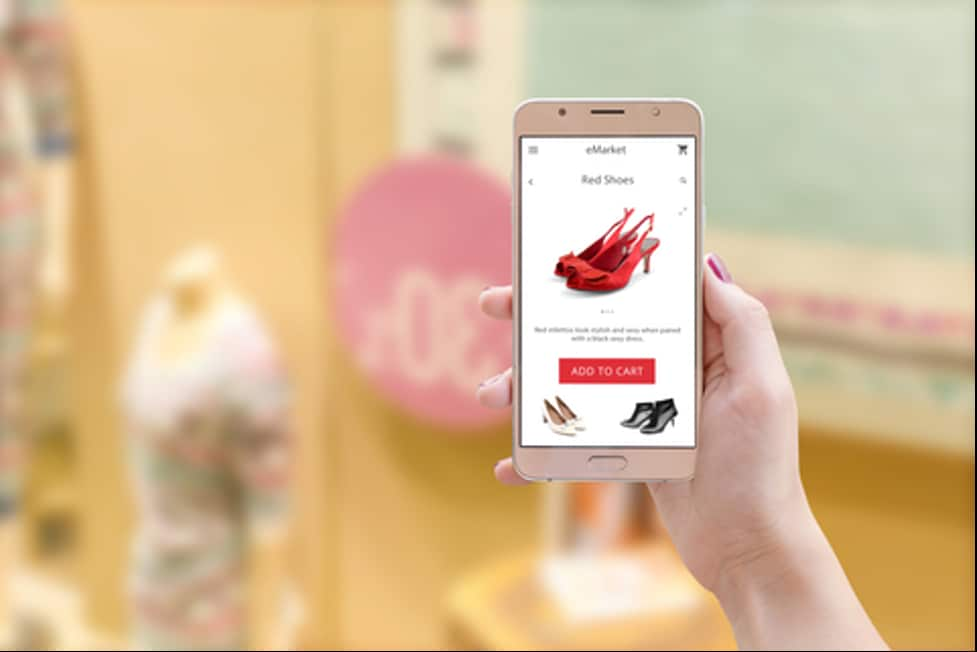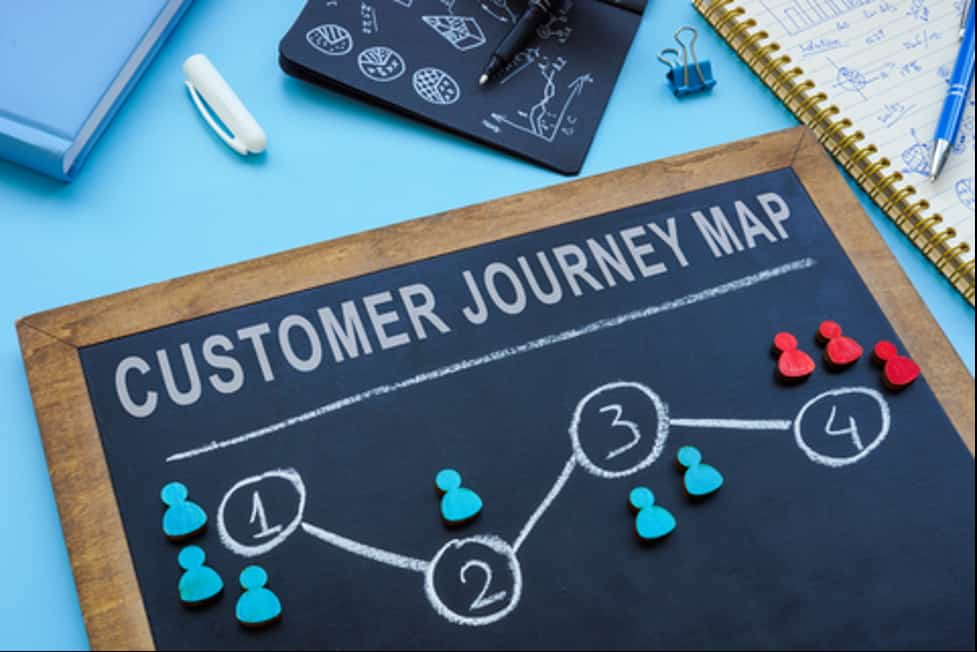Customer journey mapping is one of the most valuable exercises in a consumer insights team’s toolkit, but they have become increasingly complex in recent years since the number of channels consumers interact with brands through has multiplied. Shopping, purchasing, post-purchase support – pretty much all customer interactions these days can occur in person, by phone, through email, or via live chat.
Omnichannel marketing has naturally led to omnichannel customer service, and the customer journey map is key to understanding the full breadth and depth of online and offline experiences.
Since mapping journeys in this multidimensional world has become increasingly complicated, more insights teams are turning to a relatively new technique to meet their needs: digital ethnography (also called mobile ethnography and virtual ethnography).
Customer Journey Map Basics
Before getting into detail about how to use digital ethnography in this context, let’s look at the fundamentals of customer journey mapping. A smooth and seamless customer experience across channels is the holy grail of any company, but to provide that, it’s necessary to understand what the experiences are like from the customer’s viewpoint.
A journey map is a visual representation of all customer touchpoints across a product, brand, or service. Journey maps help companies optimize customer experiences through a deeper understanding of customer processes, needs, and perspectives. Key questions at each touchpoint include:
- What are the expectations of the customer?
- How well does the company deliver against those expectations?
- How do customers navigate channels and platforms to interact with your organization, compared with the pathways you expected or intended them to use?
These insights illuminate not only how prospects move through your sales funnel but also what their purchase and post-purchase experiences were.
Customer journey maps incorporate several essential elements: stages, personas, and touchpoints. The goal is to understand the customer’s experience navigating each stage with your brand, covering any possible touchpoints. Assigning personas is a means of understanding how the experience varies for different segments of your market. Ultimately, you want access to customers’ emotional responses along the journey to help you recognize and understand where you are succeeding, where you are not, and why.
Challenges of mapping customer journeys
Most businesses operate in an omnichannel world, and the logistical challenges of mapping customer journeys across multiple channels and platforms are self-evident. Customers might find you through a search engine, online advertising, a POP display (point of purchase), or a product review they encounter in print or on a website. Next, they might search for reviews online, visit your website, or go to competitor stores to compare prices and offerings. Their purchase decision might depend on a host of factors, including convenience, cost, brand loyalty, or the perceived risks of trying something new or different. Post-purchase interactions may involve any individual or all available touchpoints offering service and support. How can a research team follow all the potential routes customers can take? Intercepting shoppers near the POP and interviewing them about their purchase process was easy in the days before the internet. Today’s multi-channel journey, not so much!
Another challenge that has always been in play is identifying and understanding the parts of the customer journey that are not necessarily visible or directly related to the brand. No consumer decision happens in a vacuum. Each interaction represents a part, large or small, of the customer’s life that day, that week, and that year. Traditional methods, like focus groups and interviews, primarily rely on self-reported behavior and activities that the research team cannot directly observe. Therefore, relying solely on these methods offers researchers poor visibility into the full customer experience.
Digital ethnography enables researchers to meet these challenges effectively by capturing experiences as they happen and wherever they occur.
Digital ethnography basics
Digital ethnography allows researchers to remotely observe customer behaviors in the real world through their own mobile devices. In addition to offering visibility into the real-life context surrounding target customer activities and interactions, digital ethnography can also capture their thoughts and feelings about what they are experiencing in the moment.
In a digital ethnography study, respondents complete a series of tasks over a period of time that might span several days or weeks. The tasks can include journaling, uploading photos or videos of specific events, and answering questions about what customers are doing and how they feel. Tasks can be scheduled at specific time intervals or triggered by certain events or conditions.
Interactions between respondents and the research team are asynchronous, enabling respondents to participate and report at their convenience (within the project parameters). Participating via a mobile app makes the research exercises an extension of their day-to-day activities, encouraging unguarded sharing and eliminating the reflexive filters that typically come into play when people describe their own behaviors and experiences after the fact in a lab environment.
Using digital ethnography to map customer journeys
There is no standard protocol for creating a customer journey map, but there are guiding principles that will help you optimize data collection and interpretation, making the most of both anecdotal and statistical input to capture a complete and detailed picture of customer experiences.

The end goal is a visual representation that is comprehensive and easily digestible. While designing the research exercises, think ahead to how the findings will be presented, not what the map says, which is yet to be learned. Consider what format and content will be most useful for illustrating your customer stories. Videos, storyboards, timeline diagrams, and infographics can make a customer journey map come alive, preserving all the richness and authenticity captured in the original feedback.
One of the most critical aspects of customer journey mapping is focusing on the customer perspective. This might be where digital ethnography brings the most value, as it captures the customer’s point of view at every turn. The customer stays in the driver’s seat, and a well-constructed program of tasks creates opportunities for surprises like:
- Navigating a different path or following steps in an order different than the company intended or expected.
- Experiencing a touchpoint differently because of previously unknown factors.
It becomes possible to observe not only the steps customers take along the way but the steps they don’t take and why. The customer journey map can then go beyond a network of recognized touchpoints and capture the flow between and among those points.
It’s essential to account for different expectations and experiences among different segments of your market. Customer journey mapping typically incorporates customer personas and composite portraits representing distinct segments to create relatable stories that bring authentic customer experiences to life. Mobile phone based digital ethnography is highly efficient in terms of cost, time, and logistics, making it feasible to examine multiple personas in a single project.
A customer journey map must incorporate all potential touchpoints with a product, brand, or service to be helpful. As noted earlier, we live in an omnichannel world, and this is where digital ethnography shines. Leveraging people’s mobile devices essentially eliminates the boundary between bricks-and-mortar and digital encounters because no matter what people are doing, they have their phone’s on them. Digital ethnography makes it possible for research teams to tag along with each respondent as they move back and forth among touchpoints and channels. Photos, videos, text entries, and screen recordings accompanied by in-the-moment narration provide the richest and deepest visibility into real-life customer experiences we have been able to access so far. The resulting insights drive authentic customer journey maps based on real-world scenarios.
Digital ethnography is a powerful tool for teams whose responsibilities include understanding customer behaviors, experiences, or needs tied to any customer touchpoint.

